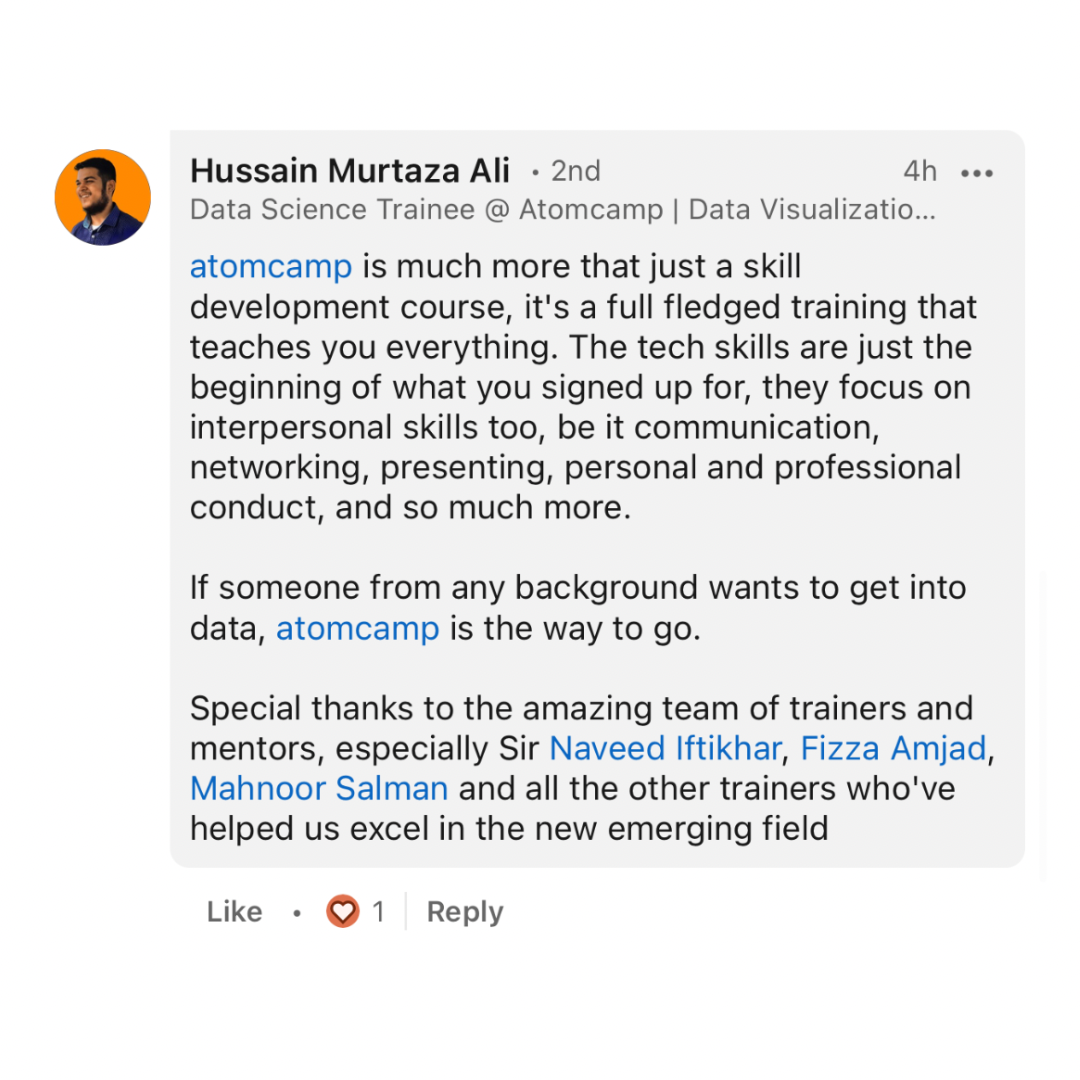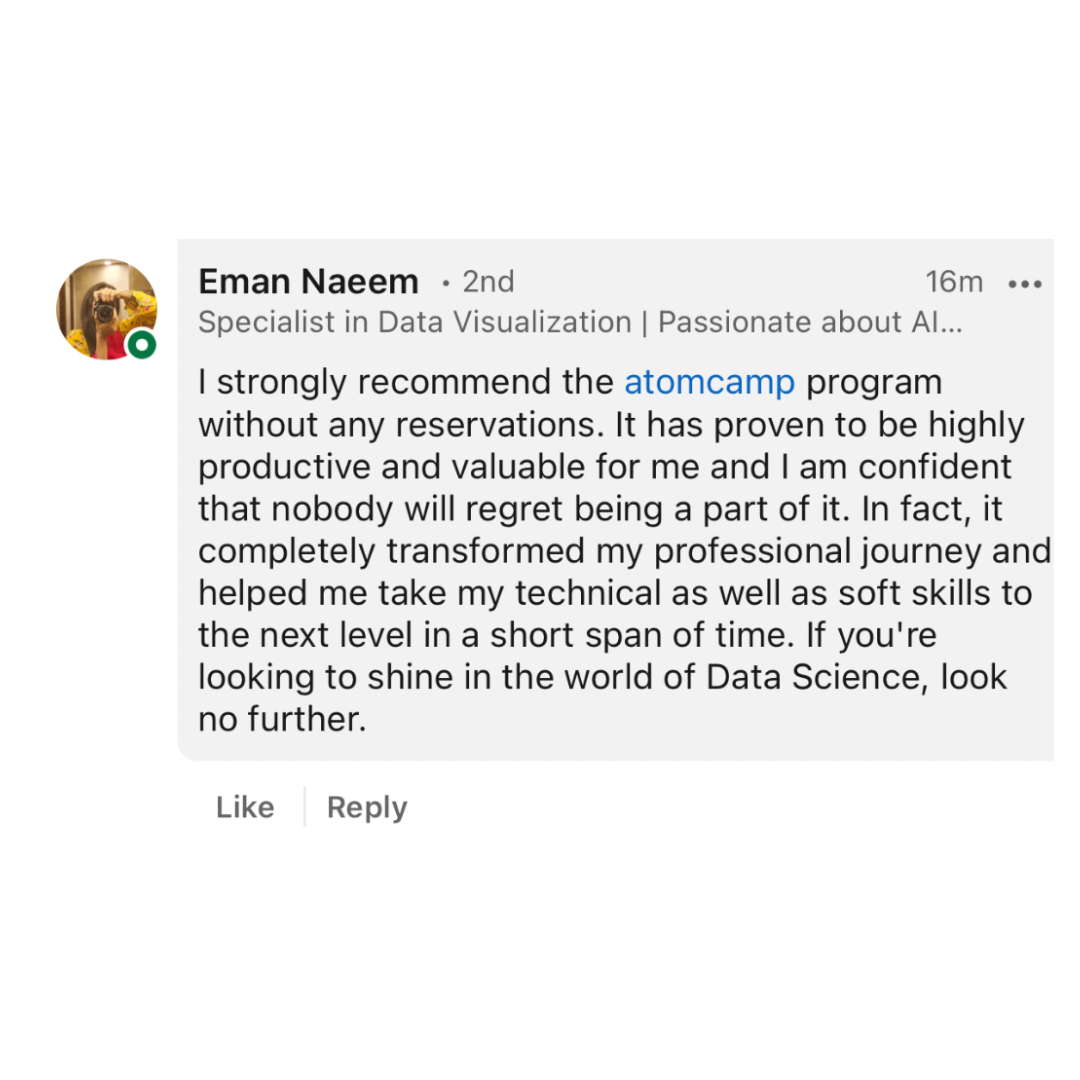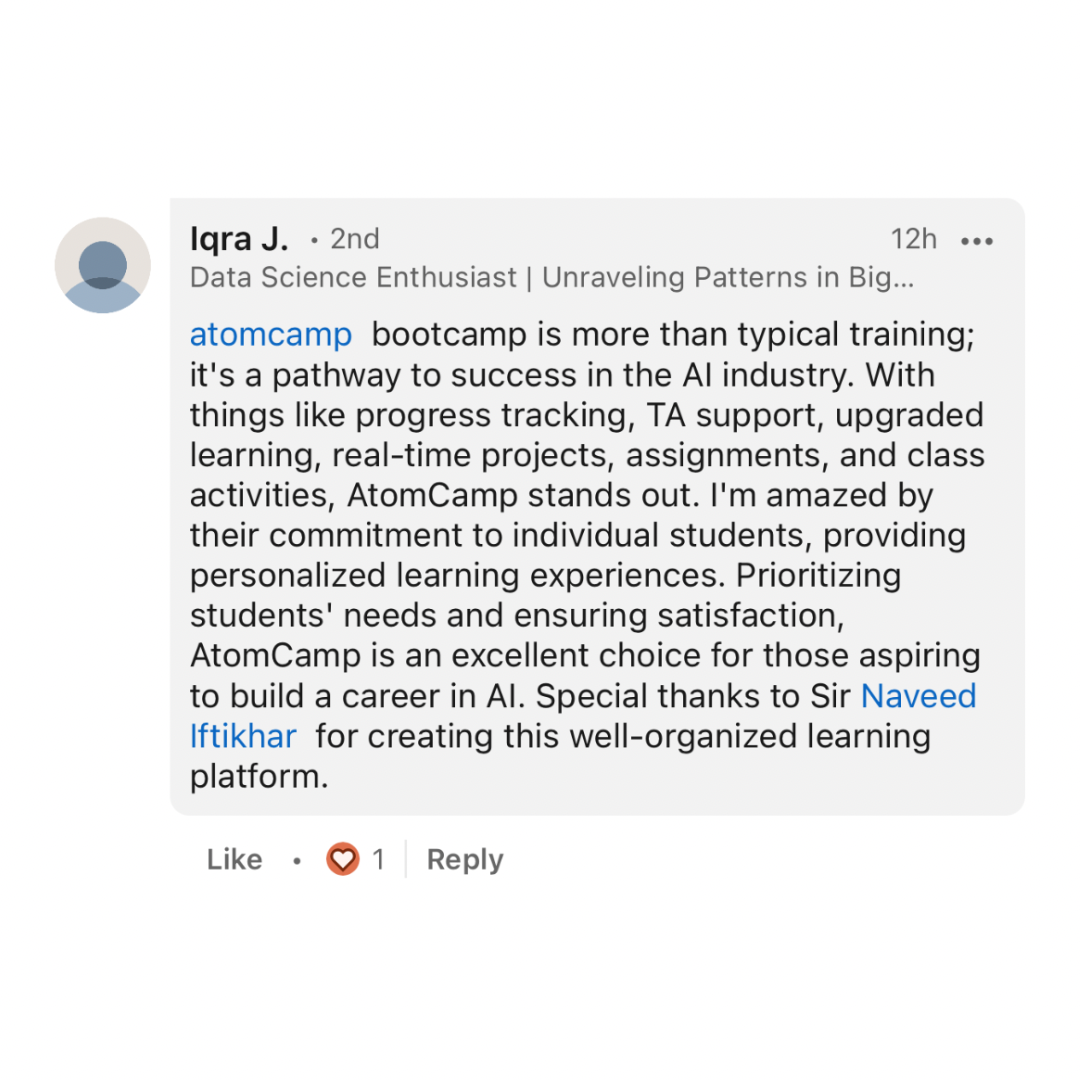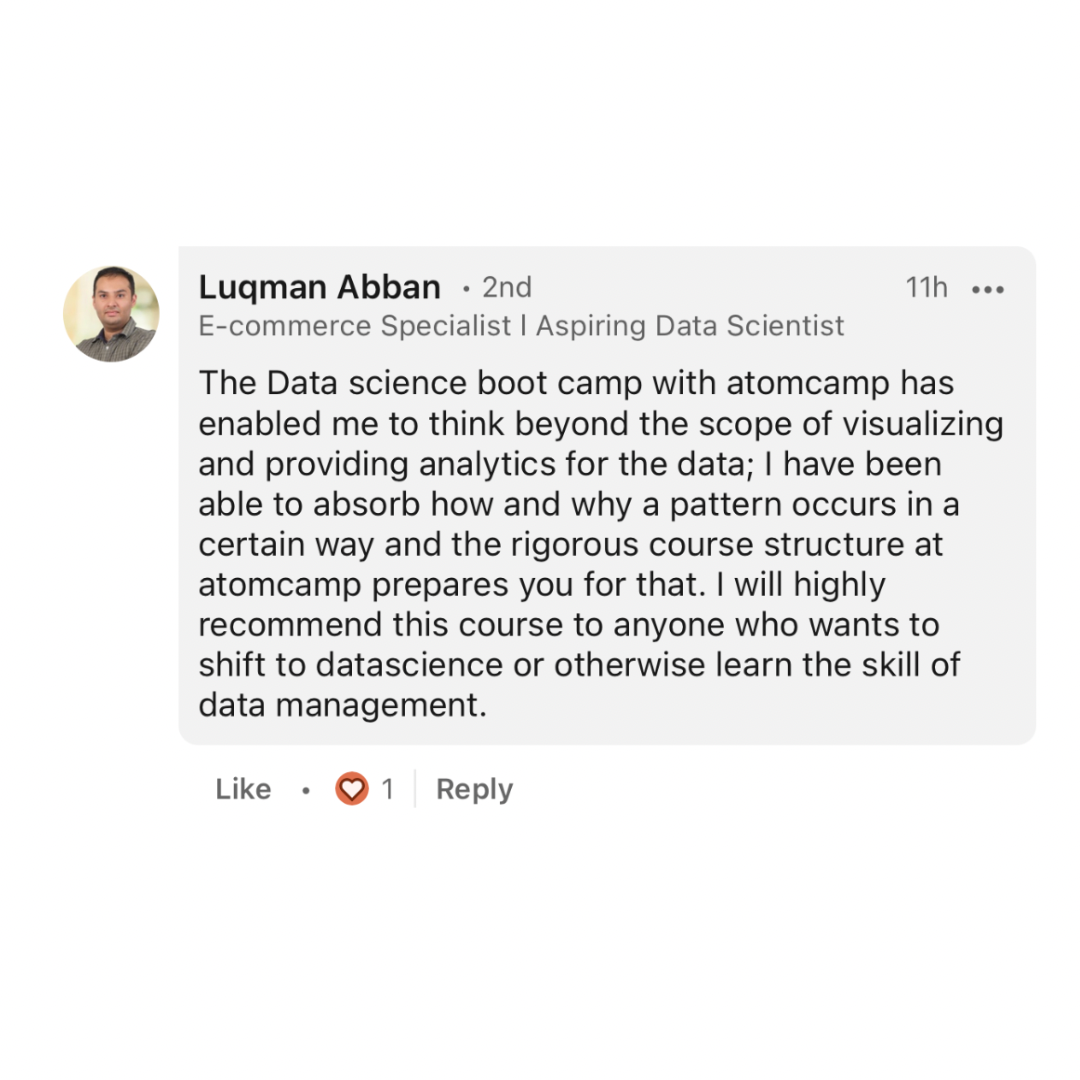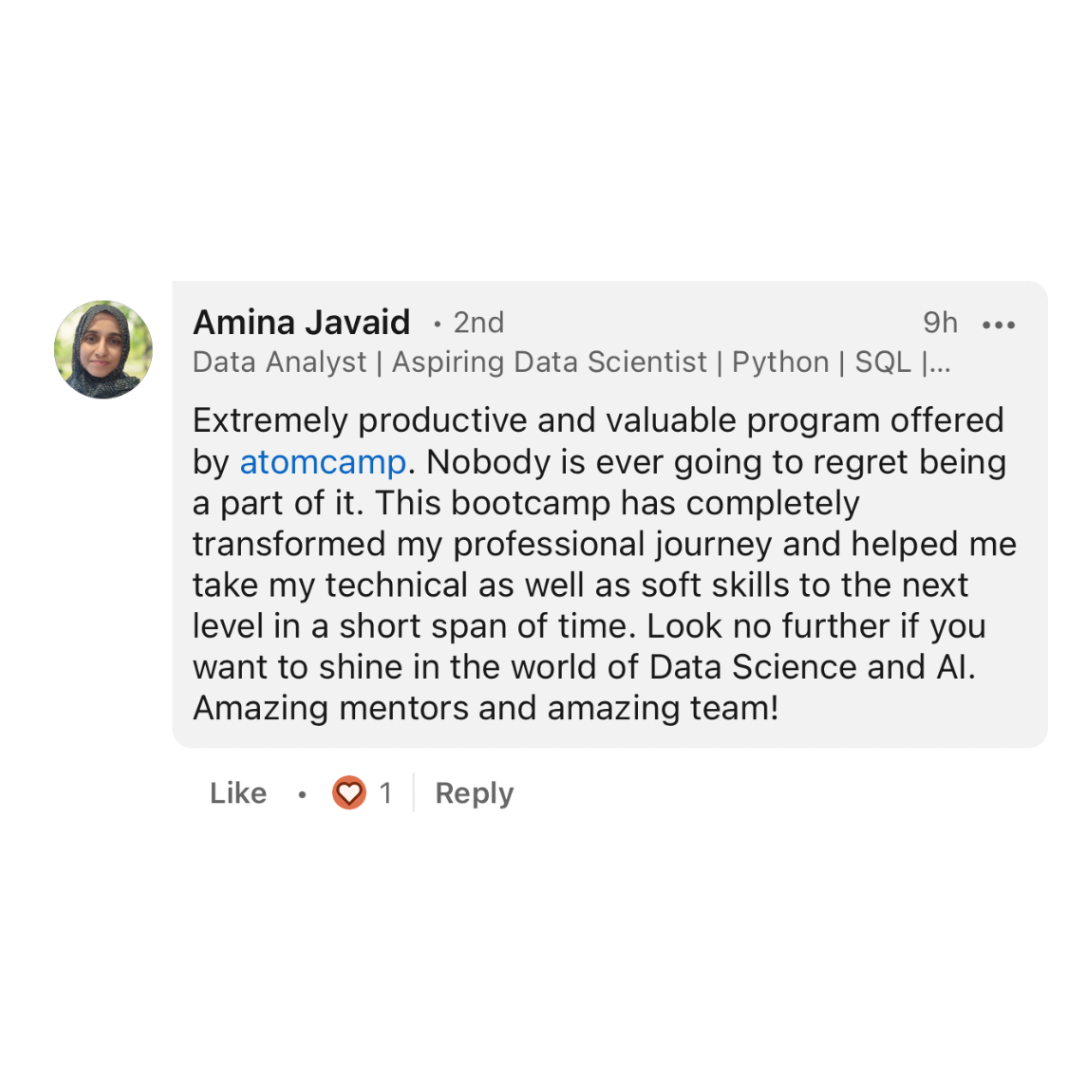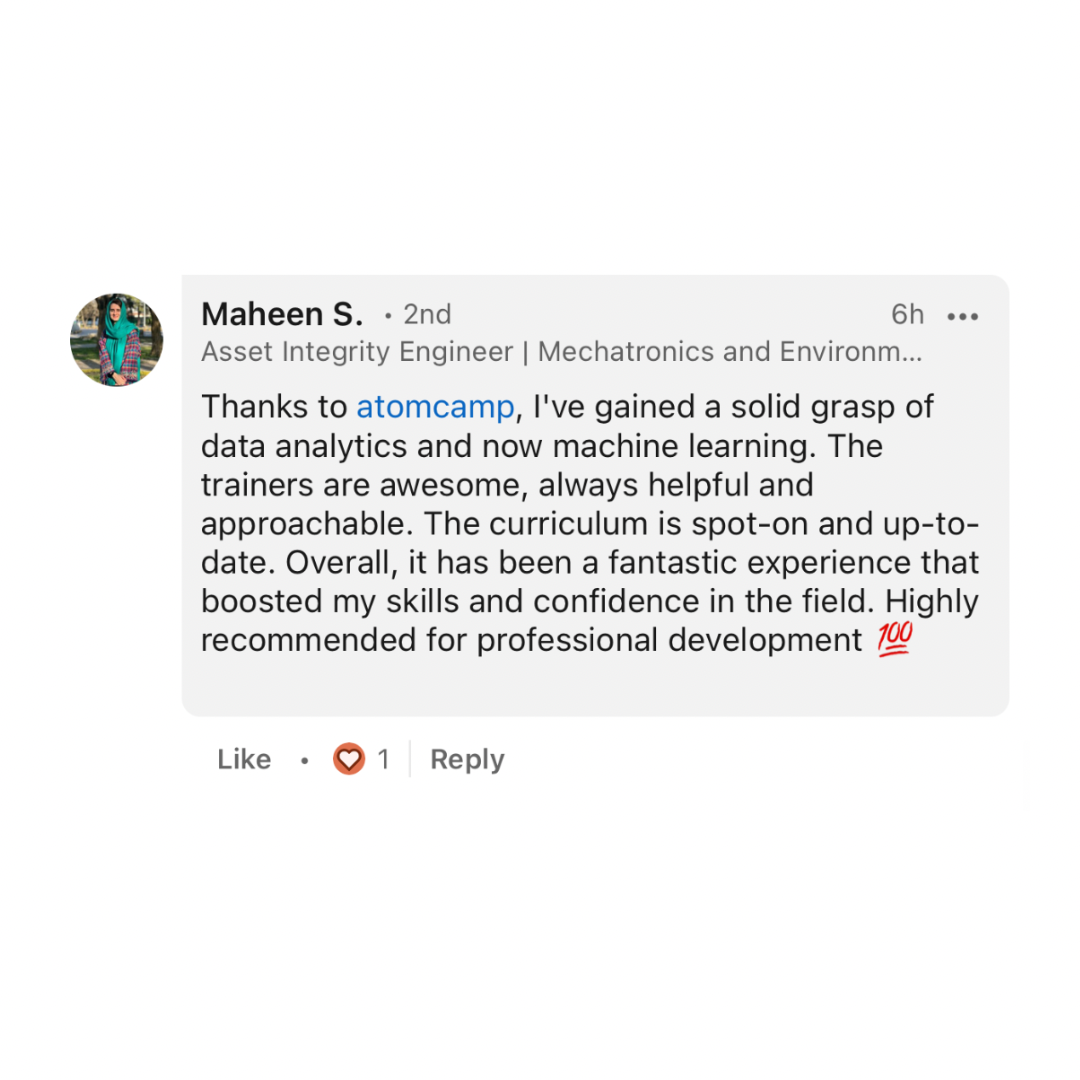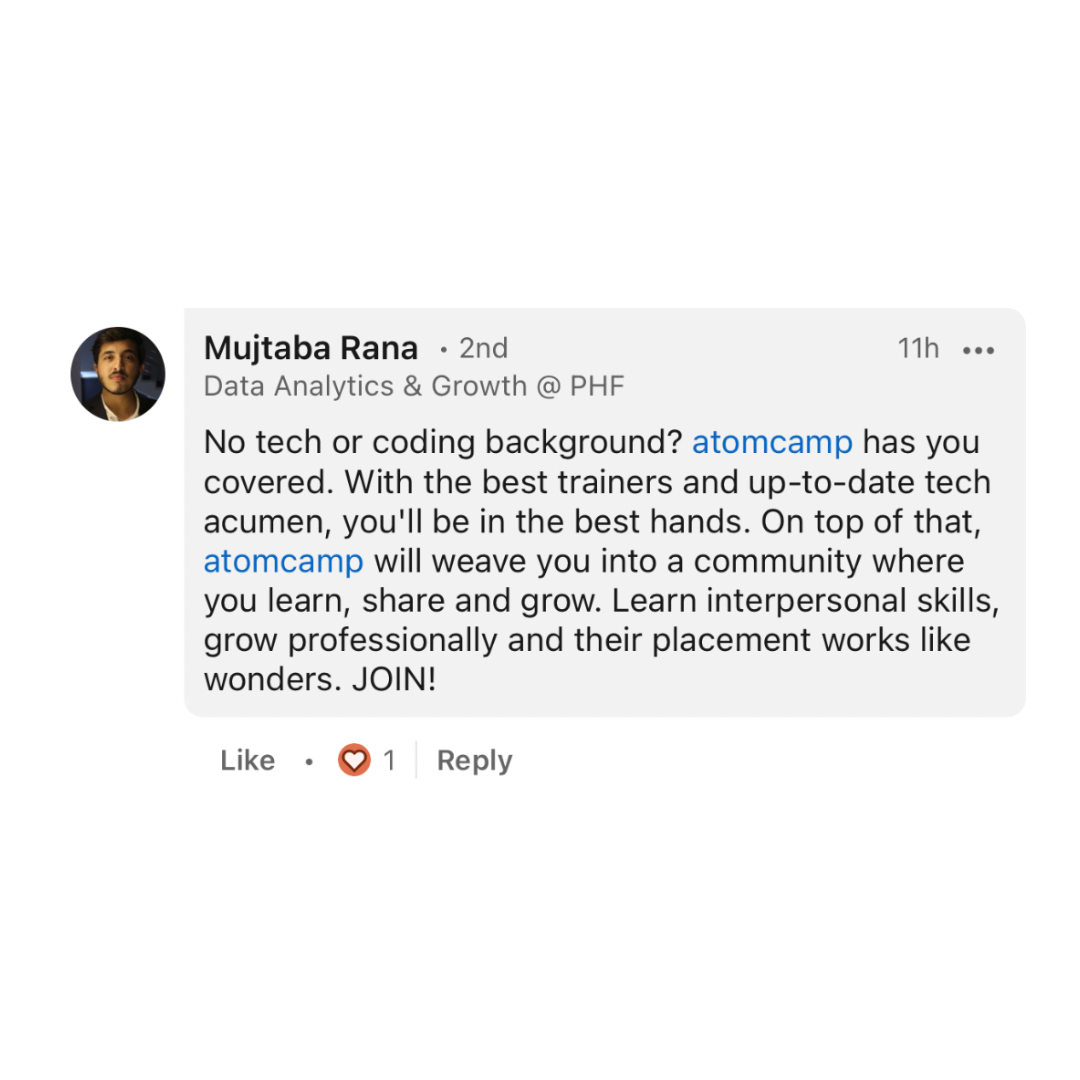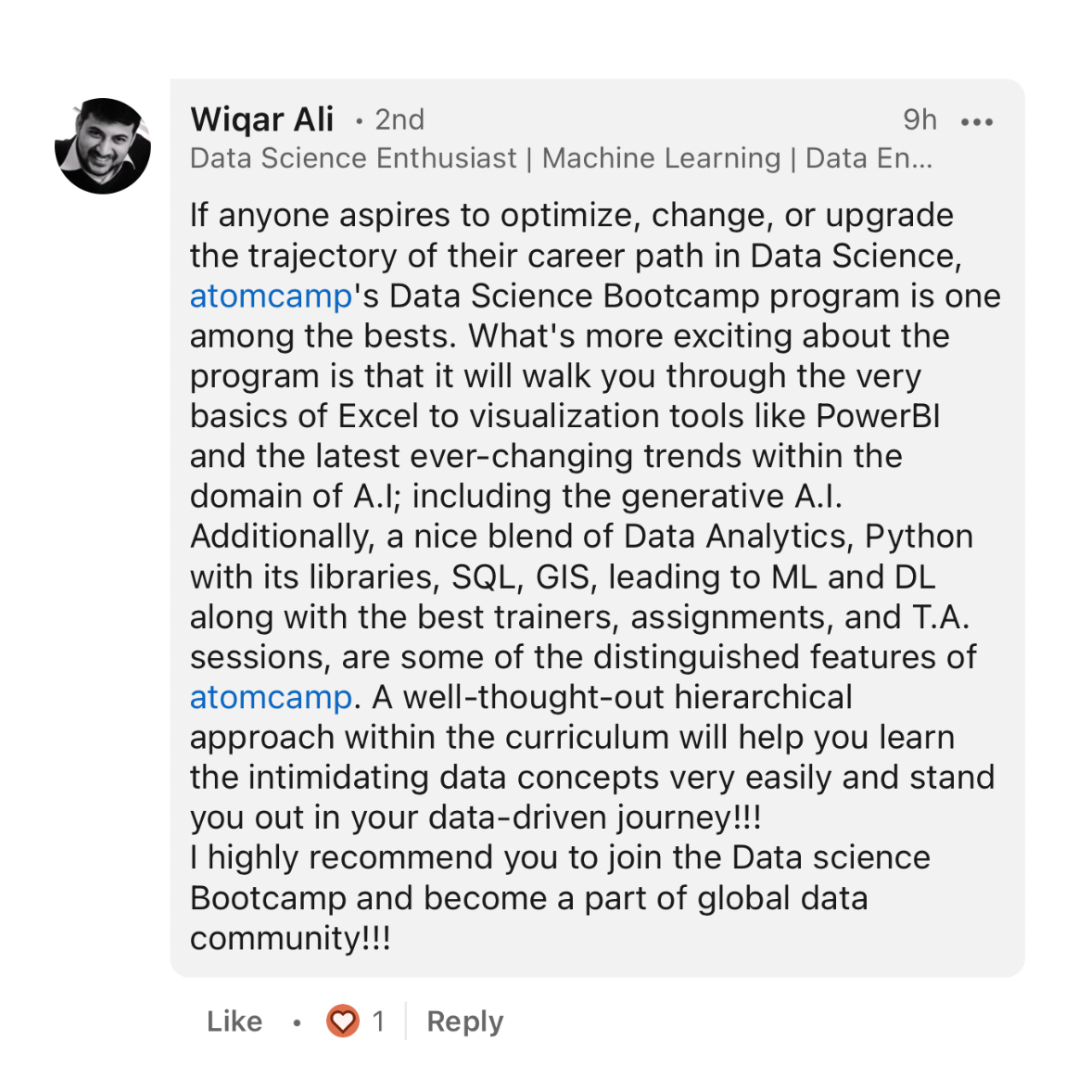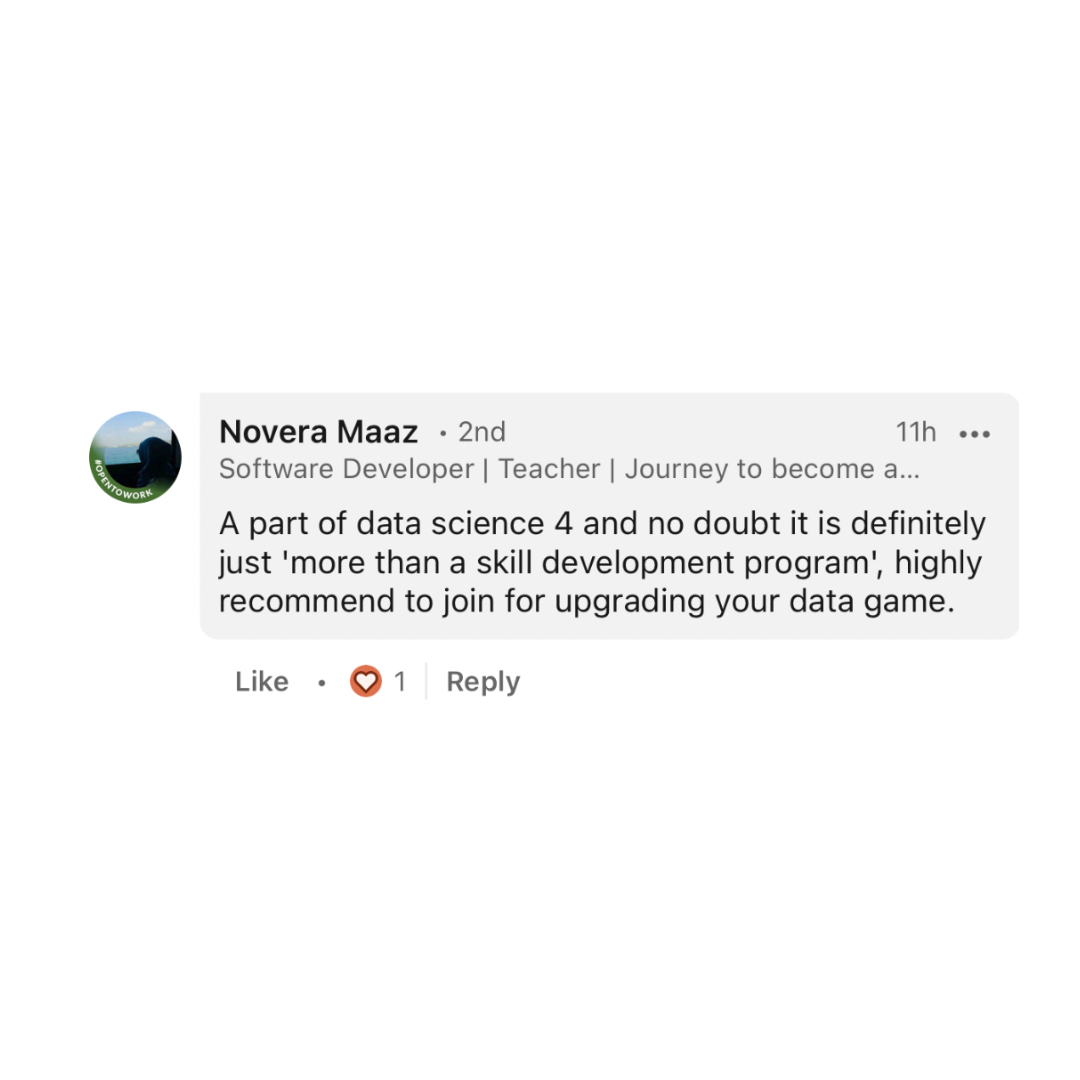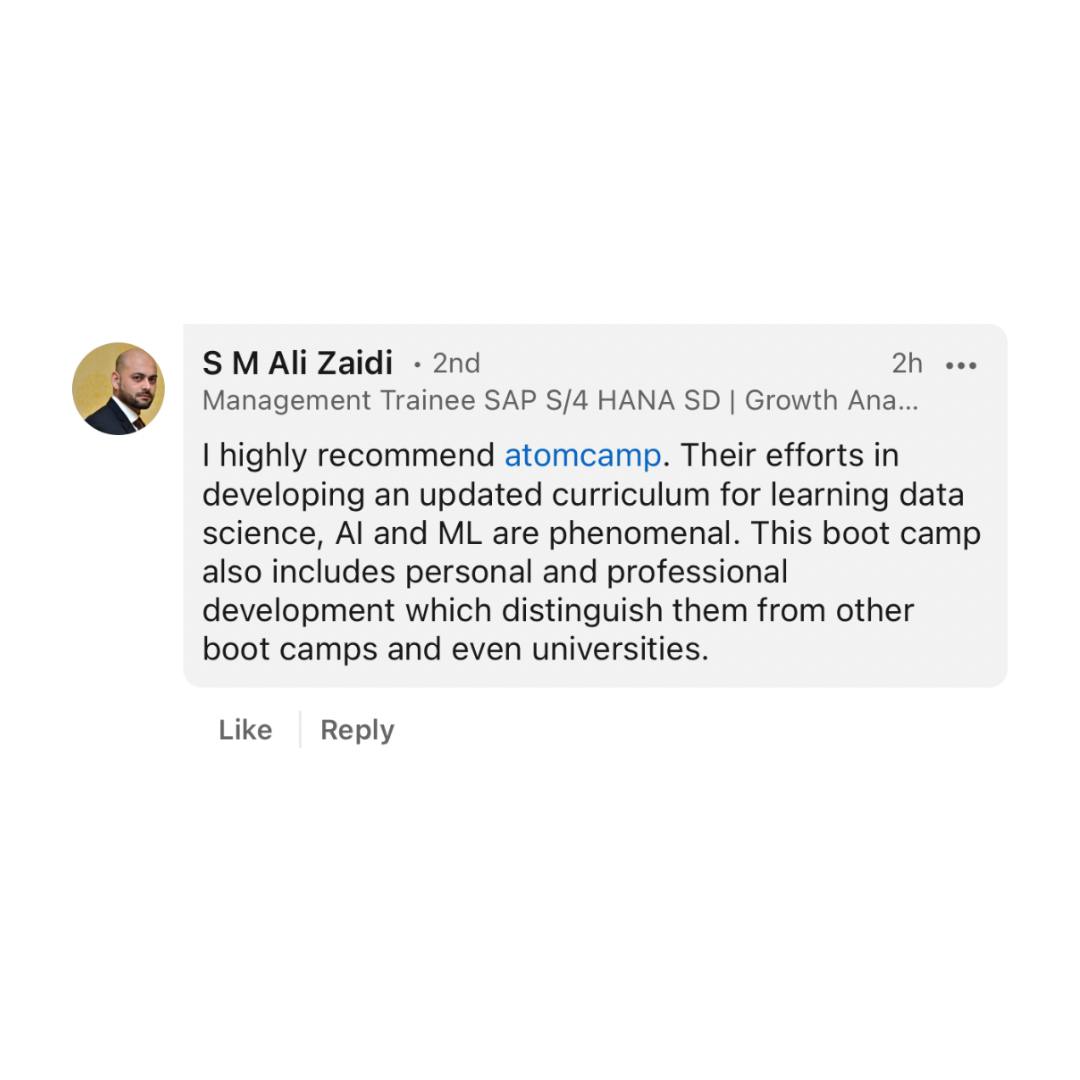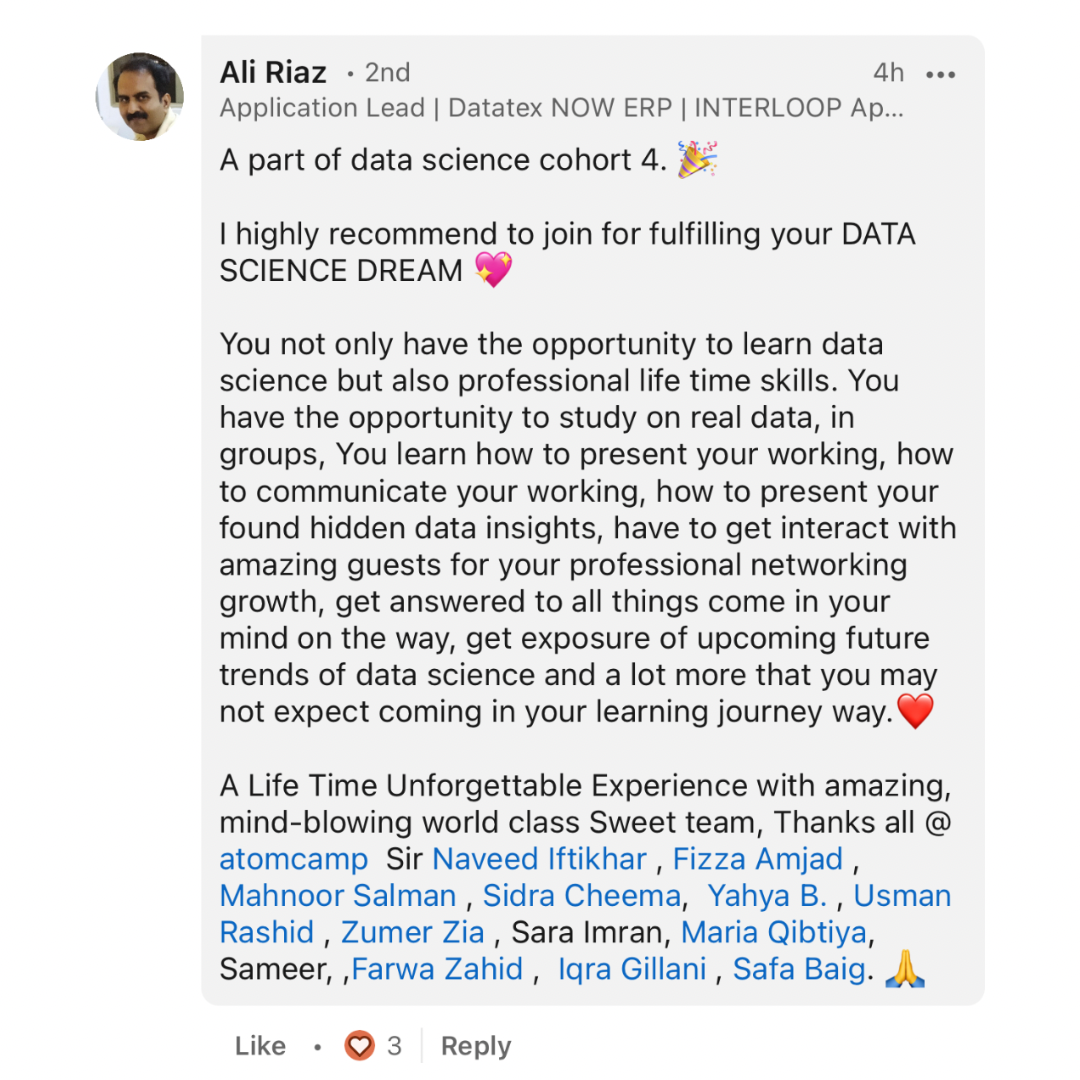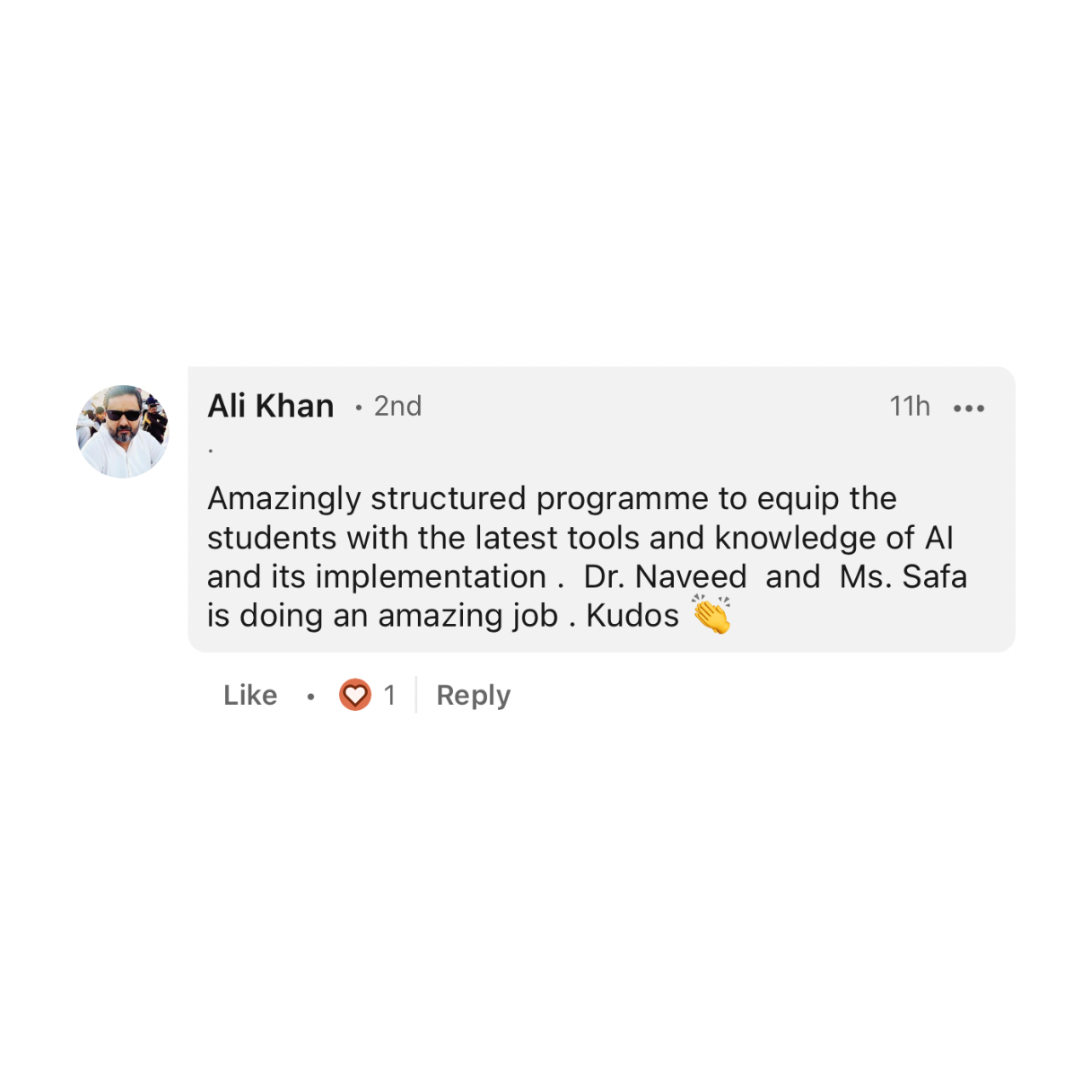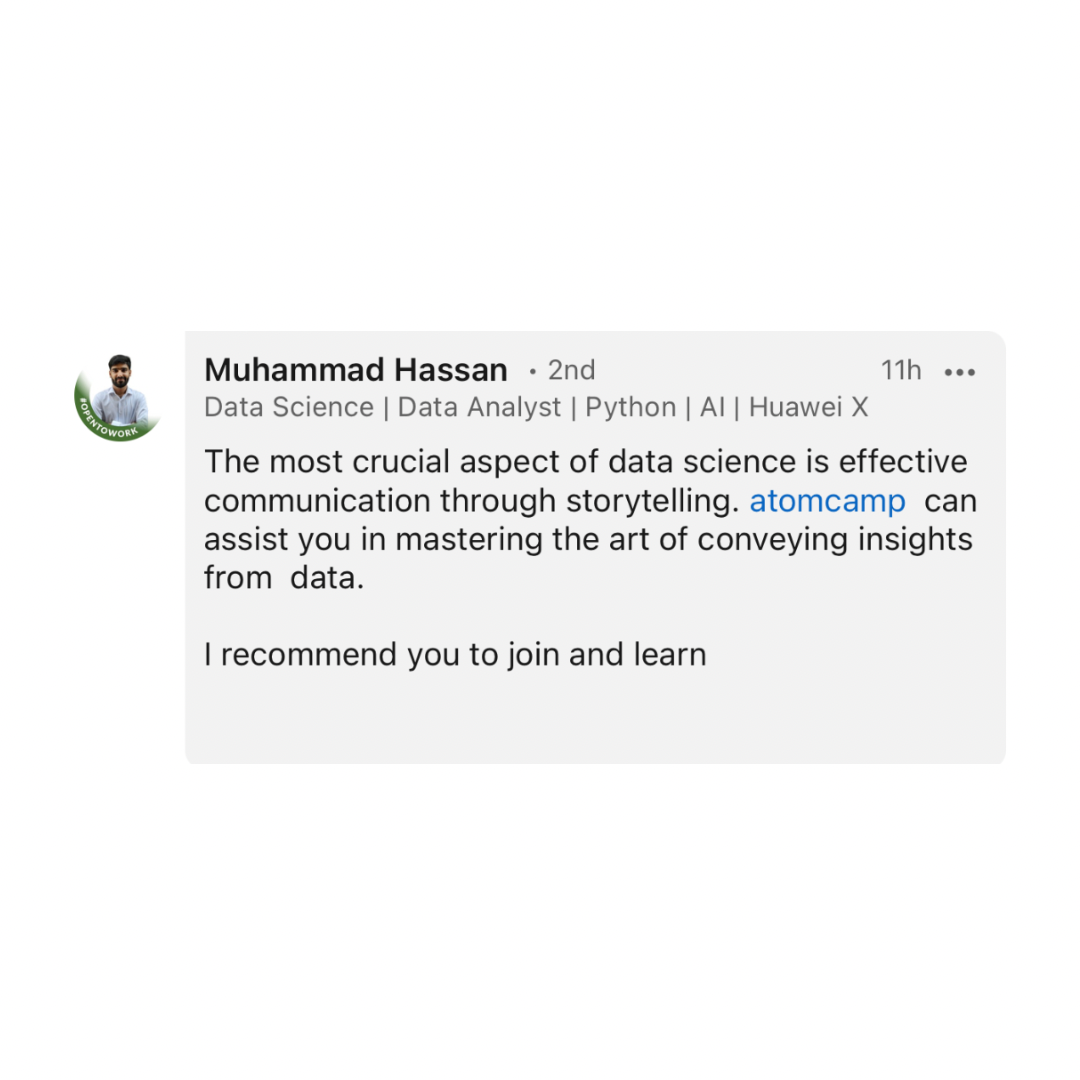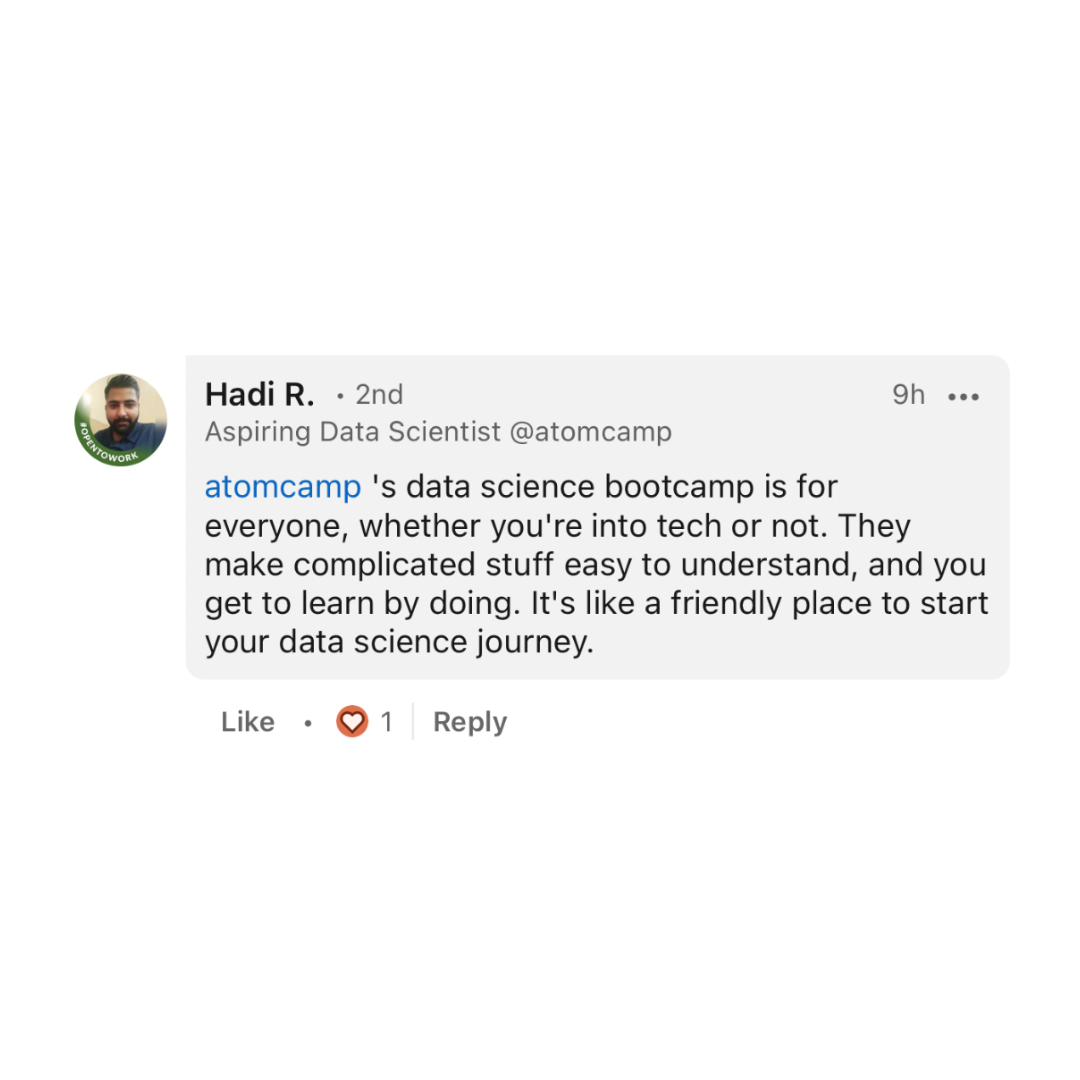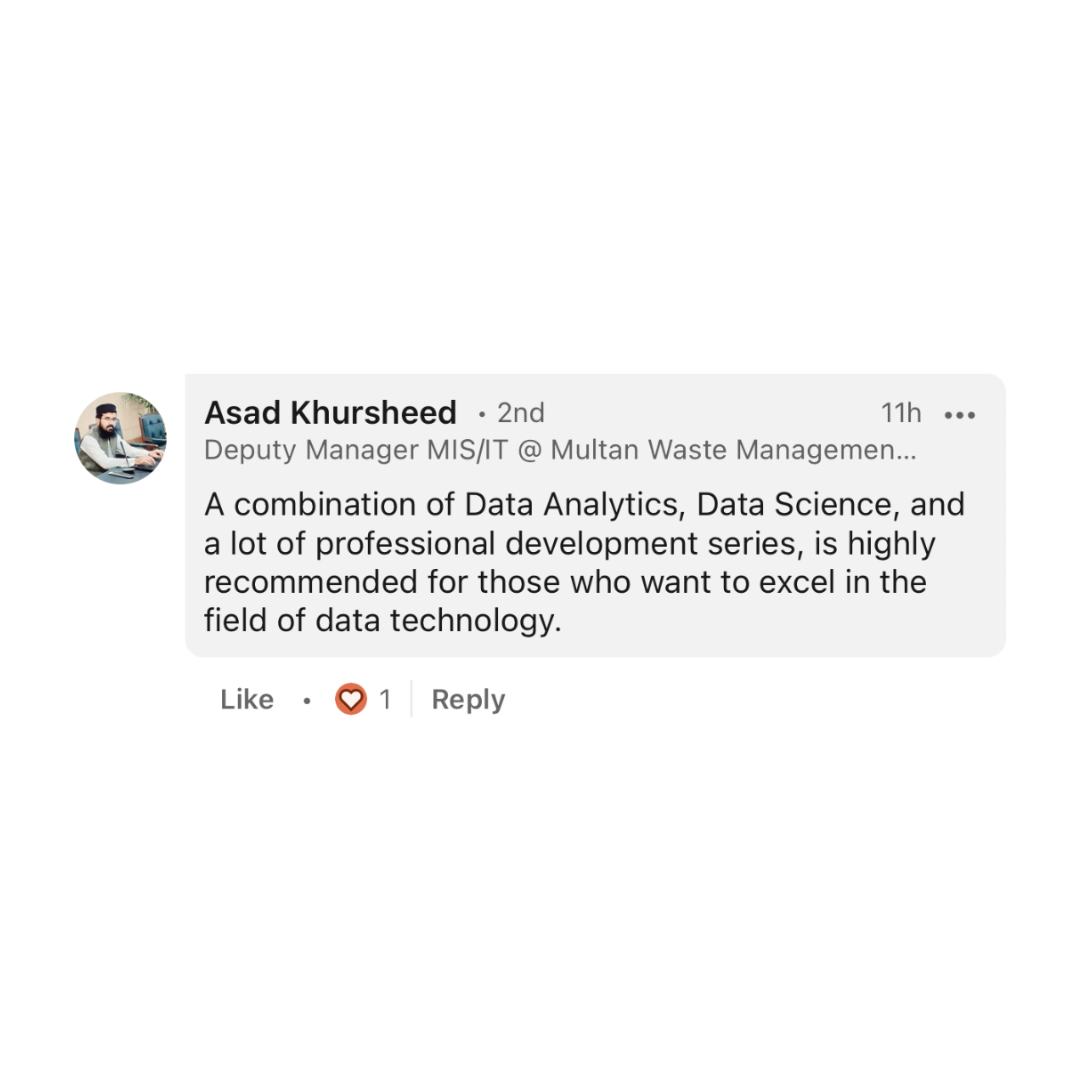Course Description
This four-month-long Data Science Bootcamp is designed to equip you with essential Data Science and AI skills like Business Intelligence, Machine Learning, Deep Learning, Large Language Models (LLMs), NLP, Computer Vision, Generative AI, and more.
It will guide you through Excel, Power BI, SQL, and Python, which is the main programming language used in AI. Additionally, we will build your expertise in other domains like Natural Language Processing (NLP), Computer Vision (CV), and Machine Learning Operations (MLOps). We ensure you are not just job-ready but you can also kickstart your International career in Data Science and Artificial Intelligence.
Join us on this journey and become a future-ready in Data Science and AI.
Course Curriculum
- Basic Data and Statistical Concepts
- Data analysis using chatGPT
- PowerBI
- Business Intelligence
- SQL
- Prompt engineering(Subscription of chatGPT 4 is mandatory)
- GIS
- Mathematical Foundation
- Installation
- Python Basics I
- Python Basics II
- Expressions, Conditional Statements & For Loop
- While loop, Break and Continue Statements, and Nested Loops
- FunctionsException Handling and File Handling
- Python Modules: NumPy,Pandas and Matplotlib
- Advanced Topics
- Introduction and Missing Value Analysis
- Data Consistency, Binning, and Outlier Analysis
- Feature Selection and Data Wrangling
- Inference, Hypothesis Testing, and Visualization
- Machine Learning Performance Metrics and Naive Bayes
- Logistic Regression, SVM, Decision Trees, and Random Forests
- Hyperparameter Tuning, PCA, and SVD
- Clustering Introduction, Partitioning Algorithms, and Cluster Evaluation
- Regression and Evaluation of Regression Methods
- Introduction to Time Series and Time Series Forecasting
- Models and Hyperparameter Tuning
- Introduction to Natural Language Processing (NLP) and Large Language Models (LLMs)
- Fundamentals of NLP
- Introduction to Large Language Models
- Practical Applications of NLP and LLMs
- Ethical Considerations and Challenges
- Hands-On Exercises
- Future Trends and Opportunities in NLP and LLMs
- Computer Vision
- Reinforcement Learning
- Stable Diffusion Models
- Machine Learning Operations(MLOps)
- 10+ projects in 4 months
- International speakers and mentors for guided projects
- Industry level data sets and projects
- Continuous practice with real world case studies with data analytics
- Skills demonstration on data cleaning, data analysis, data visualization
- Email writing
- Logic and critical thinking
- Reporting writing
- LinkedIn optimization
- Presentation and visual communication
- Resume, CV and cover letter writing
- Acing interviews
- Personal branding
- Global market understanding
- One-on-one mentorship
STANDARD MONTHLY
-
For 4 Months
LUMPSUM
-
For 4 Months
Check your Eligibility
- Currently enrolled or have graduated with a bachelor’s degree in:
- Computer Science or related fields
- Any Engineering Discipline (Mechanical, Electrical, Civil etc)
- Management, Math, Statistics, Natural Sciences
Complete our Bootcamp and Become Job Ready
We help our successful graduates find Jobs and Internships, and also provide guidance in discovering Freelance opportunities.

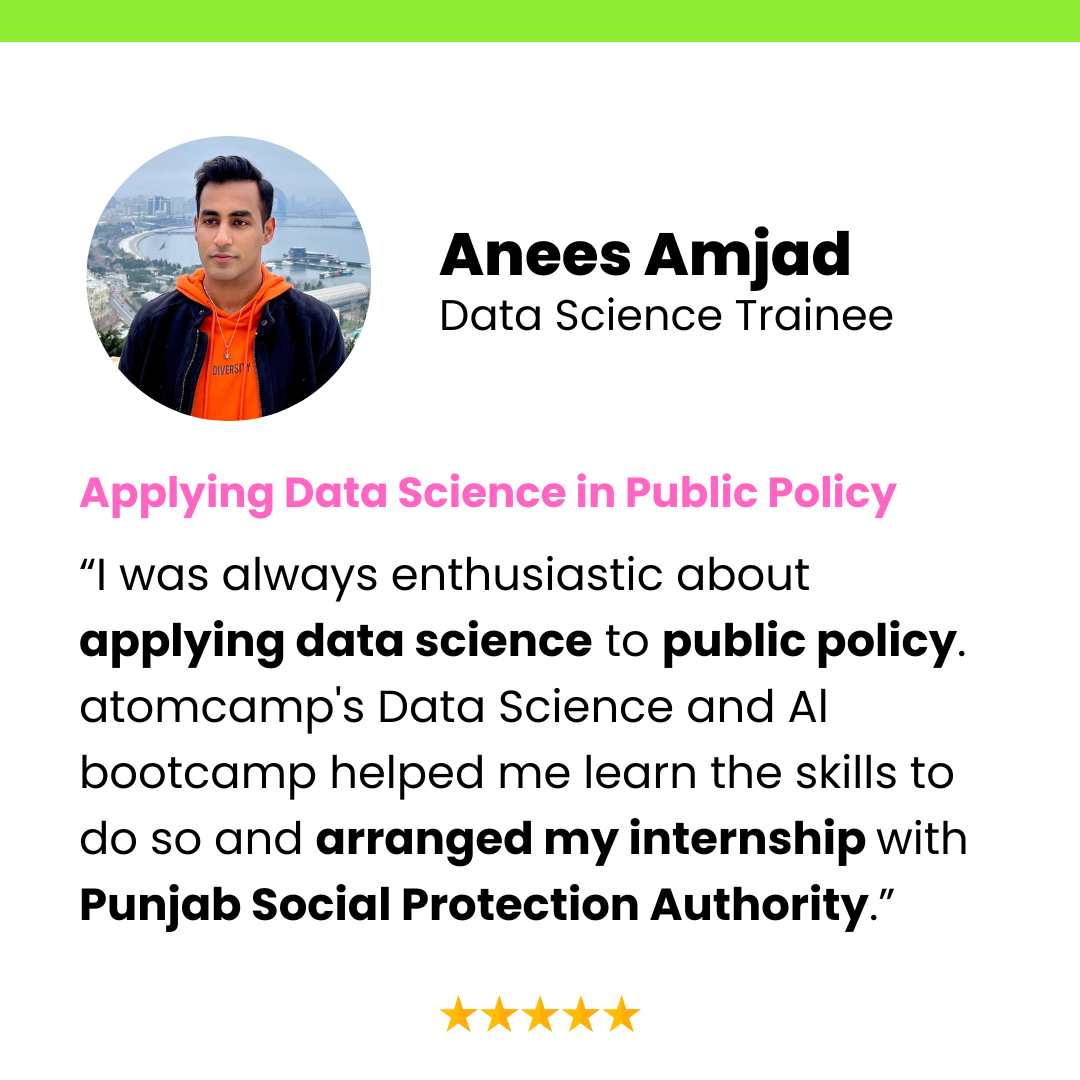

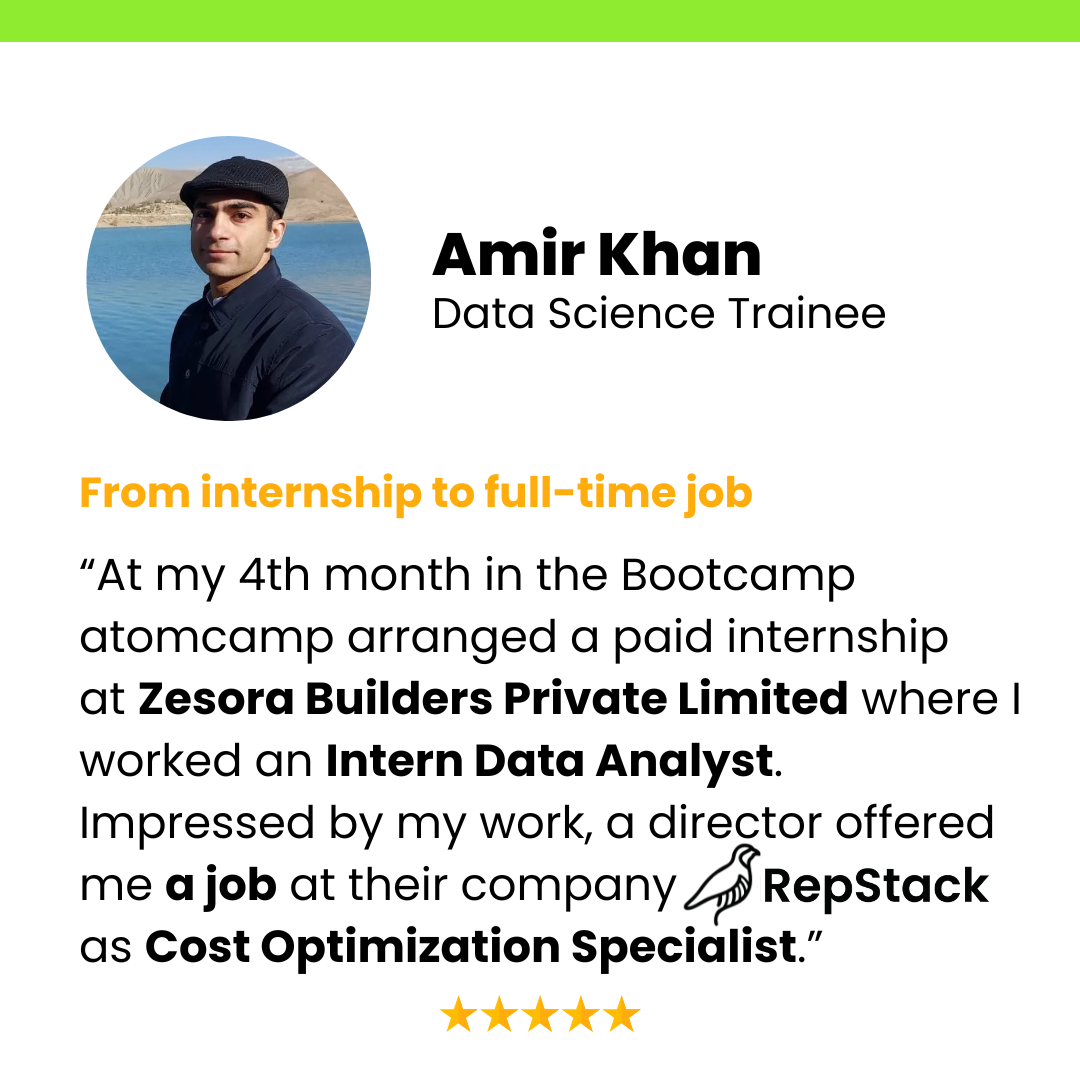
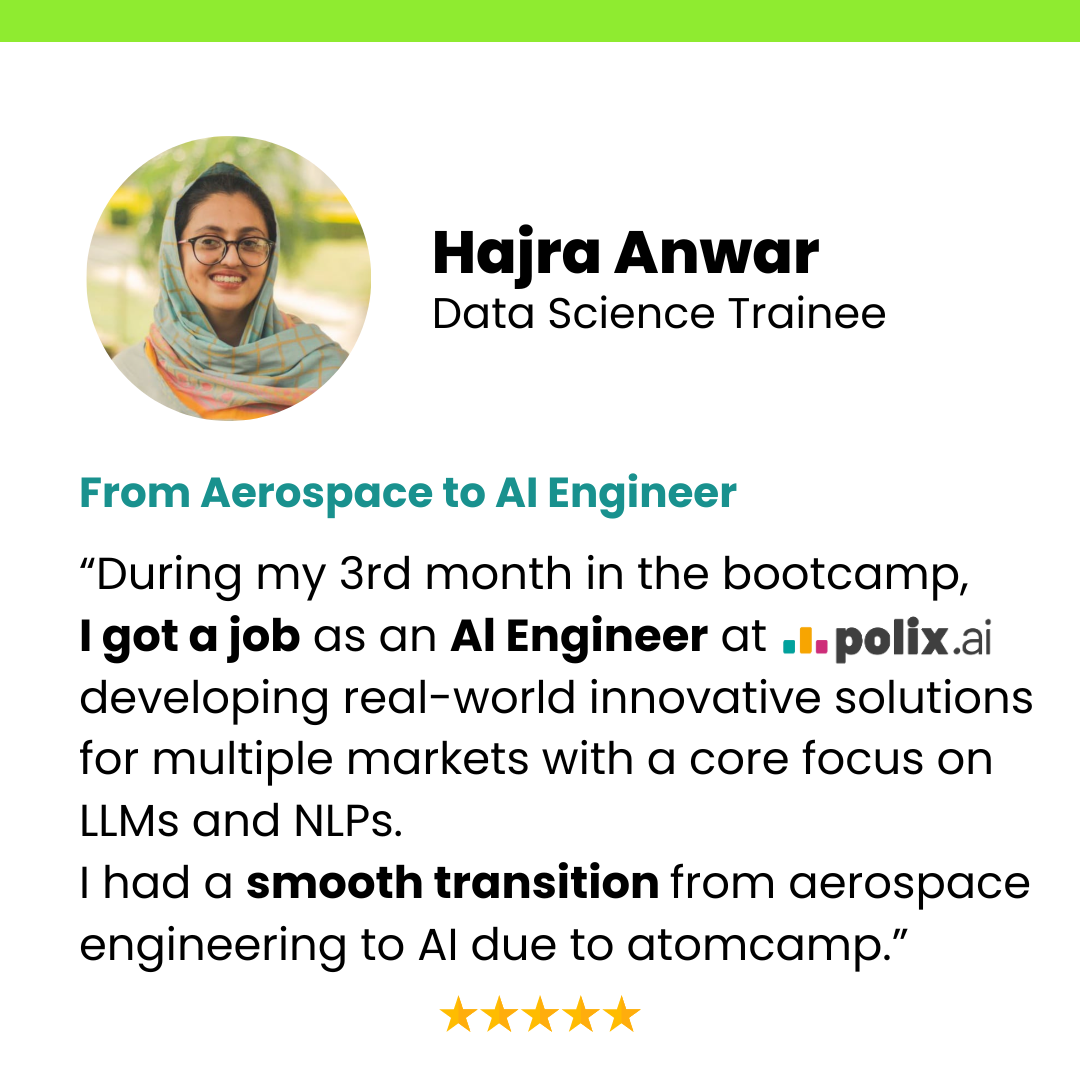
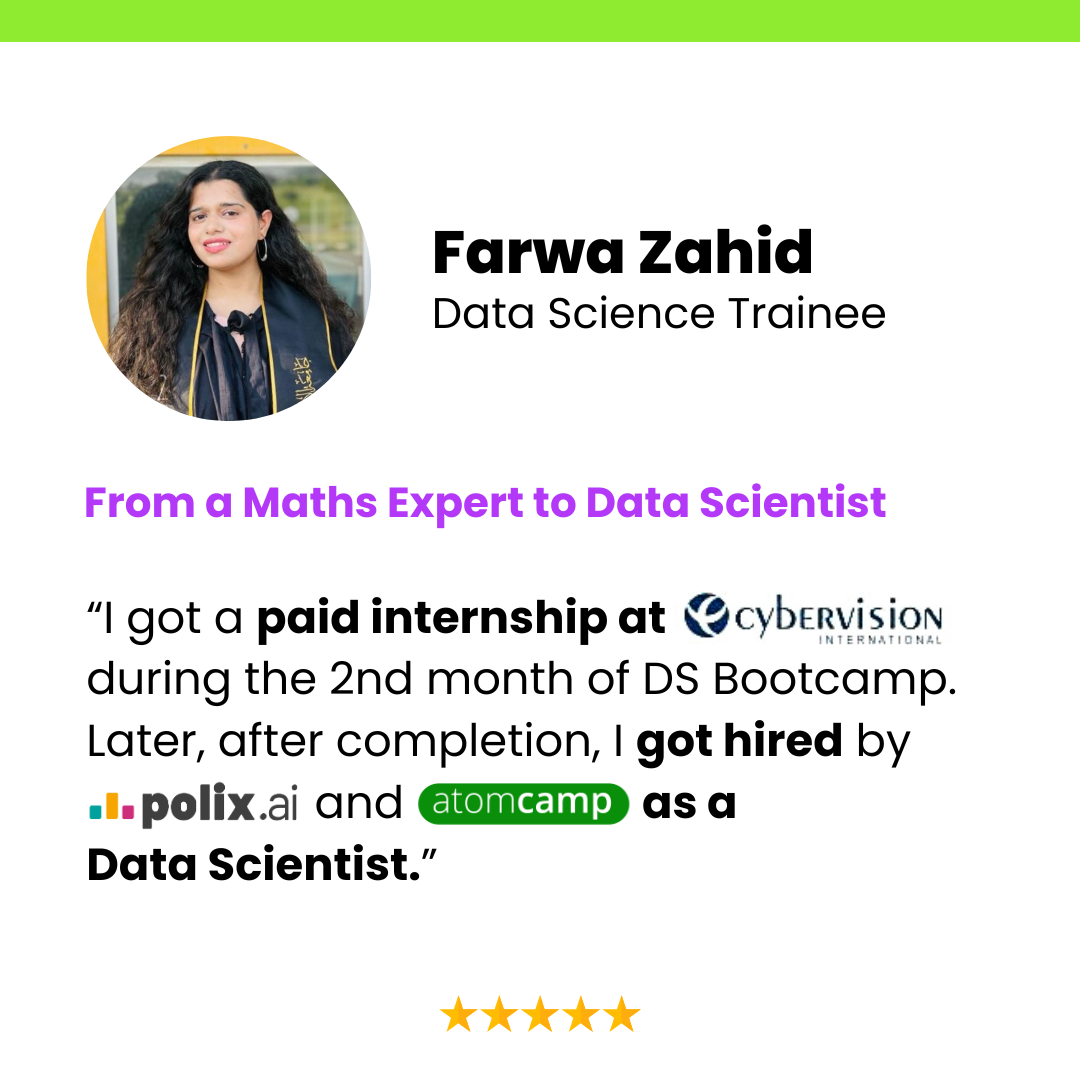


Key Features
Industry Ready Portfolio
Craft a portfolio that showcases your industry-ready AI projects.
Enhance your career by learning Data Science and AI skills.
Strengthen your data skills and excel in your existing career.
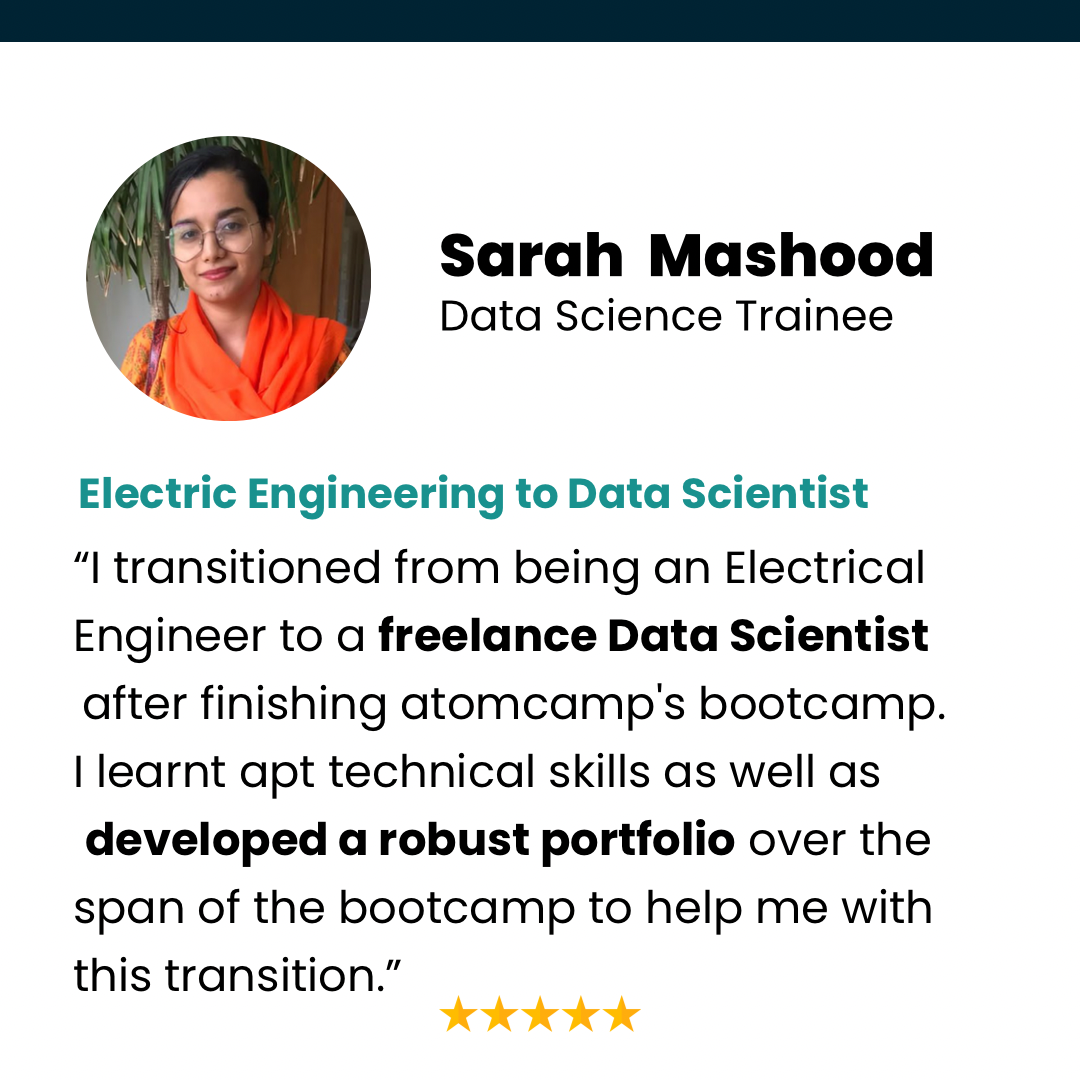
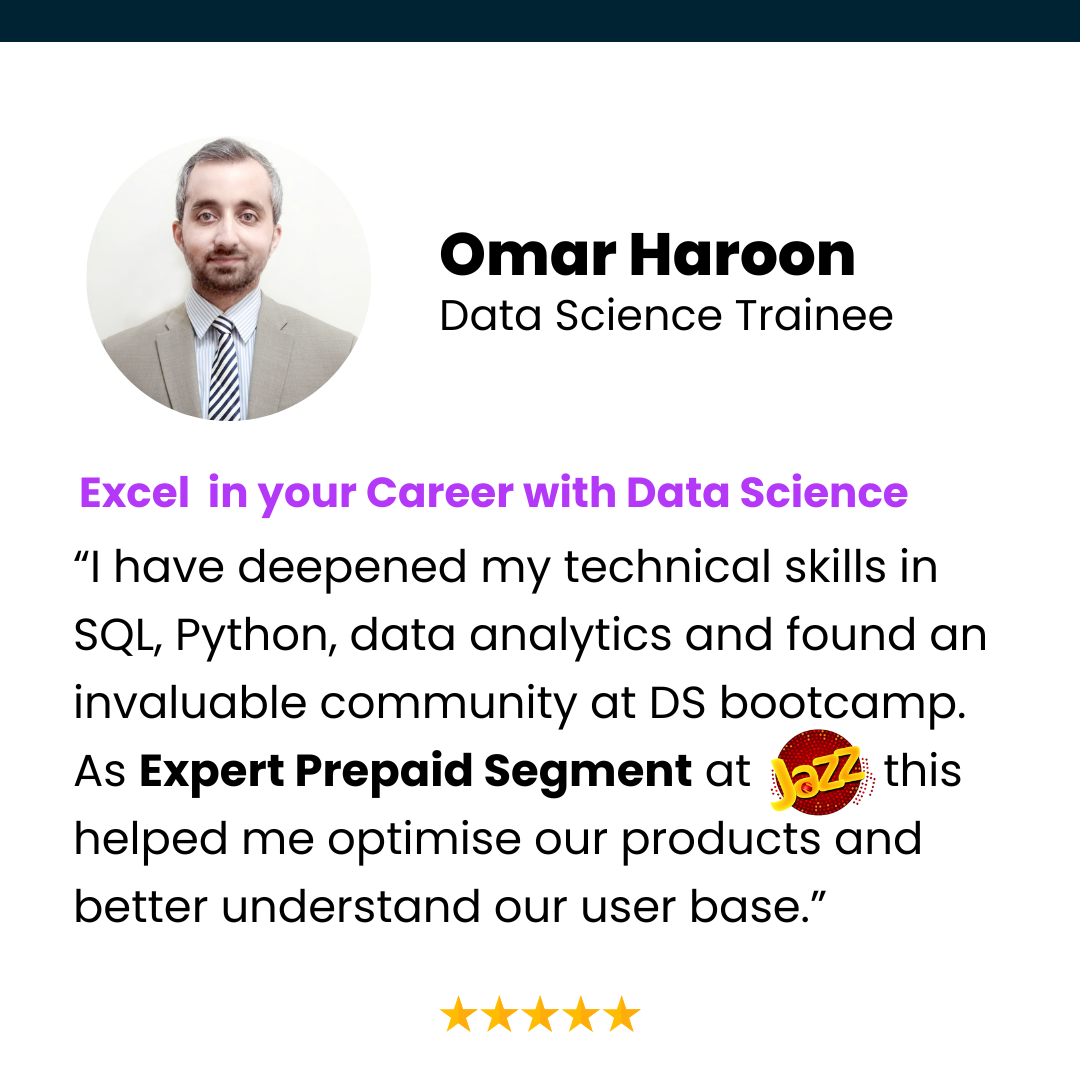
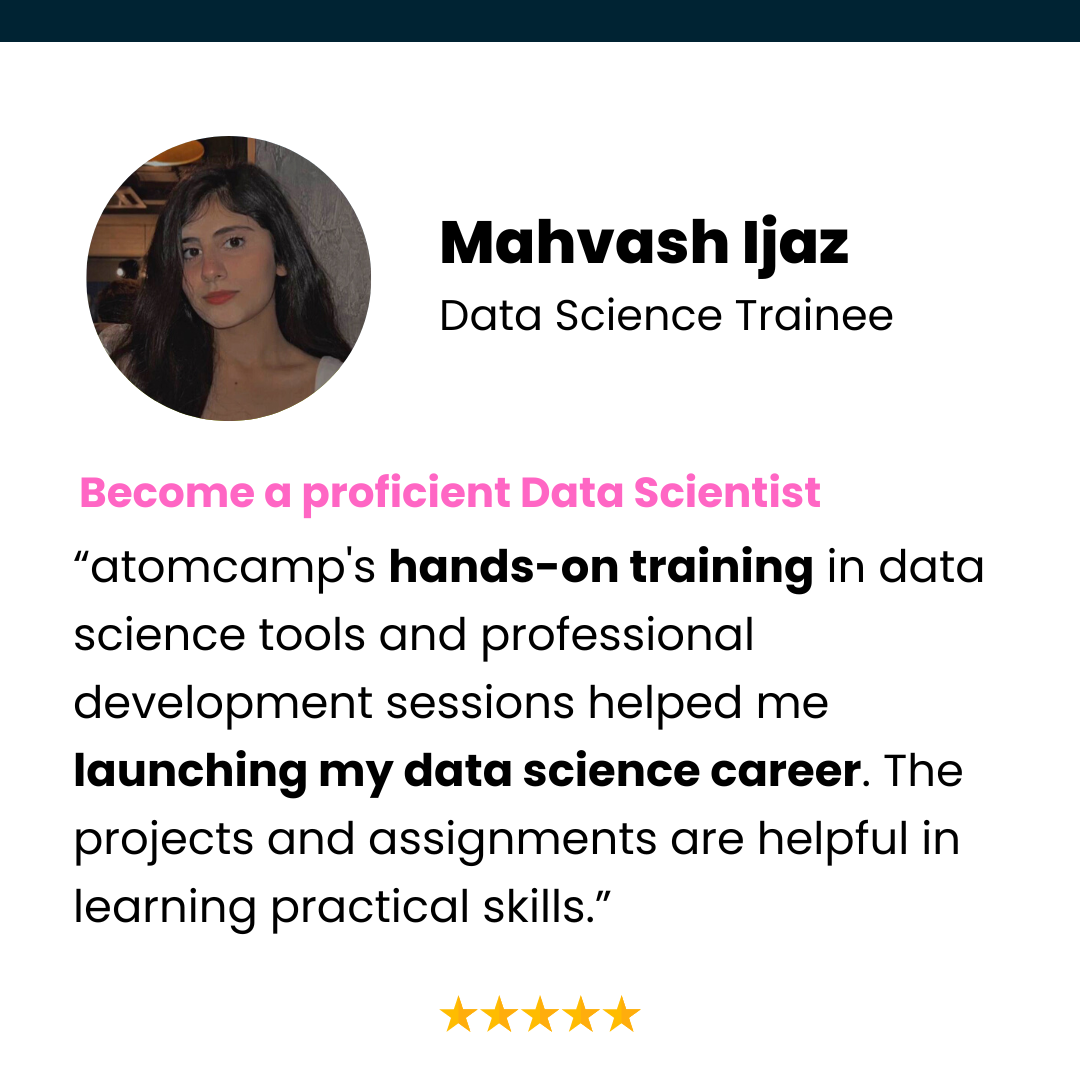
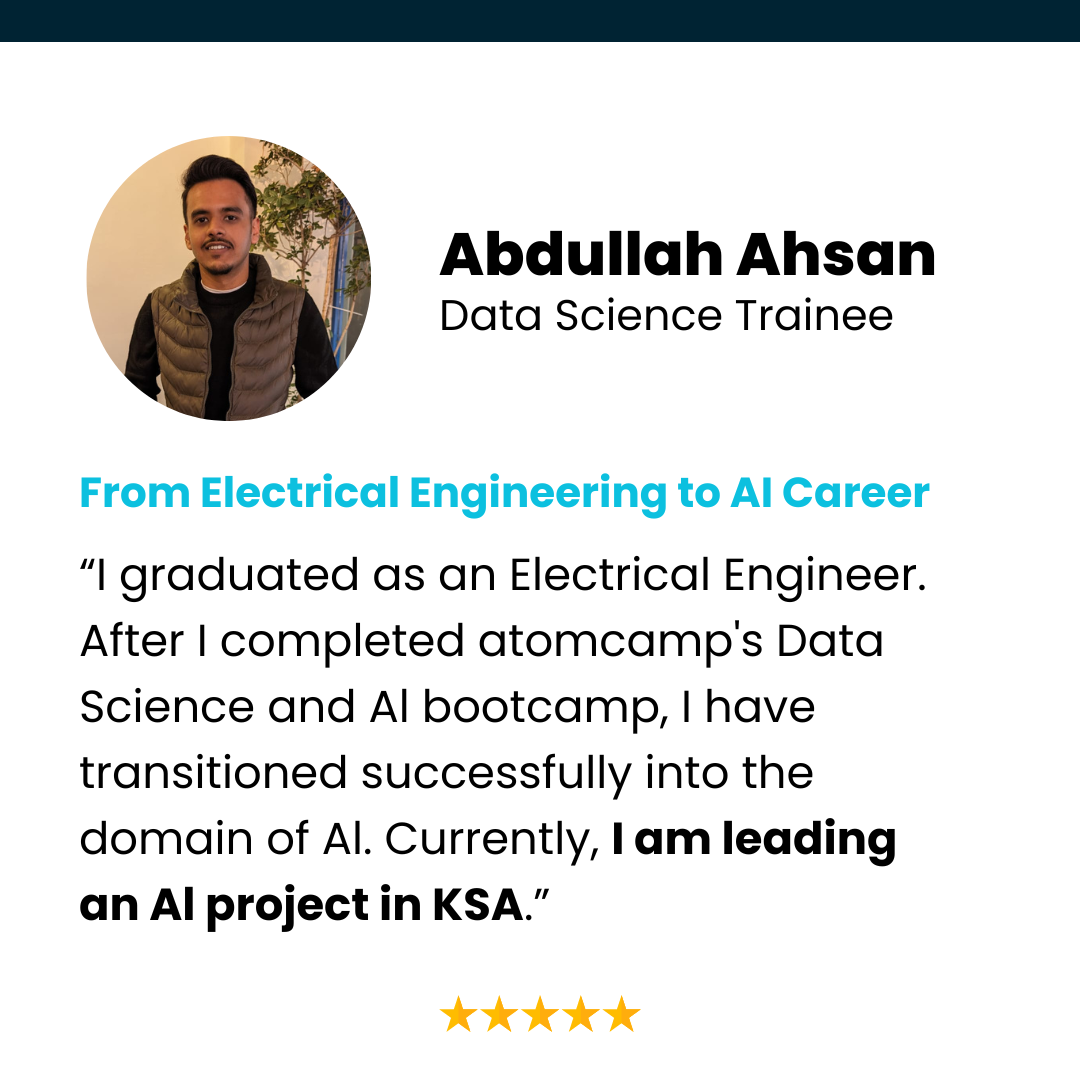
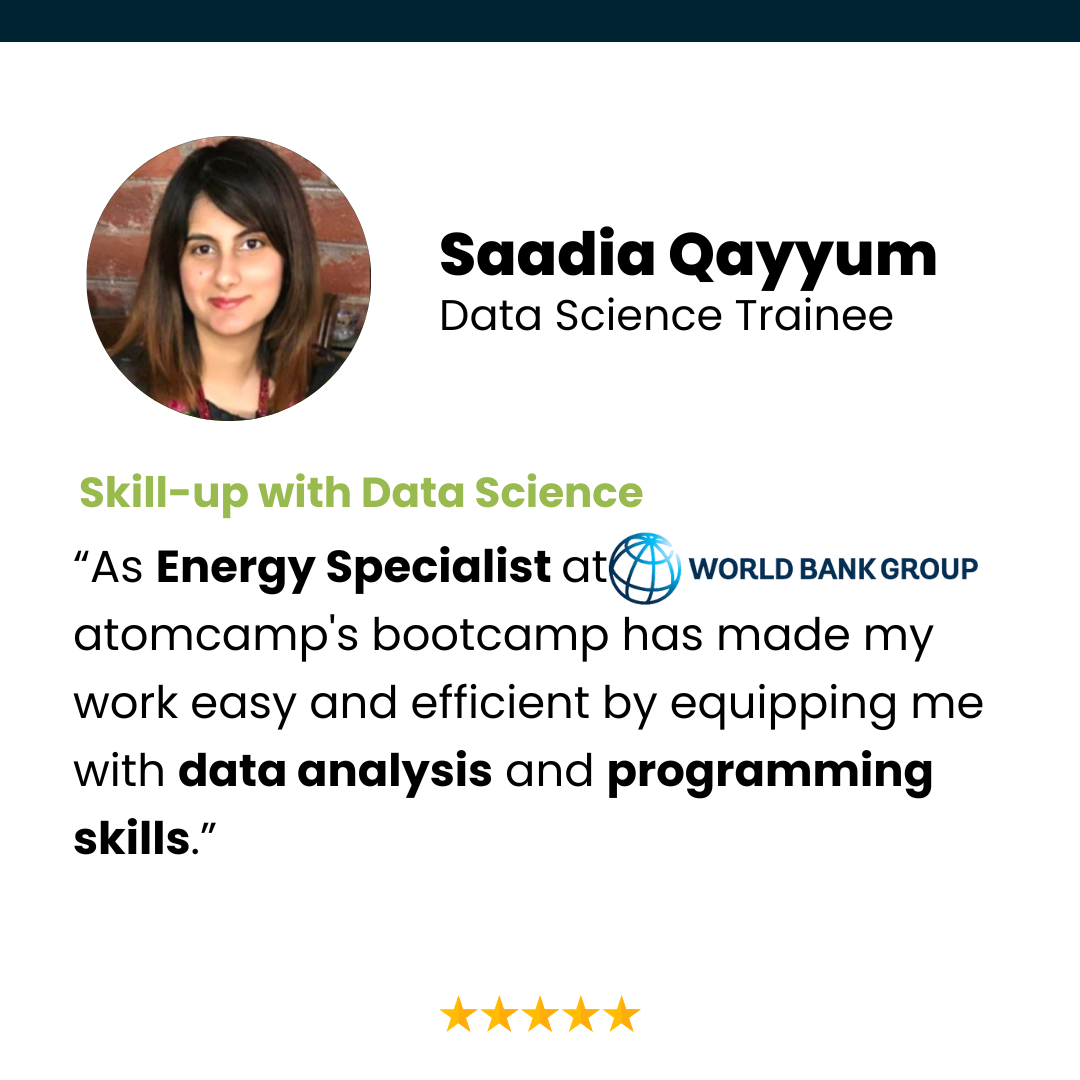
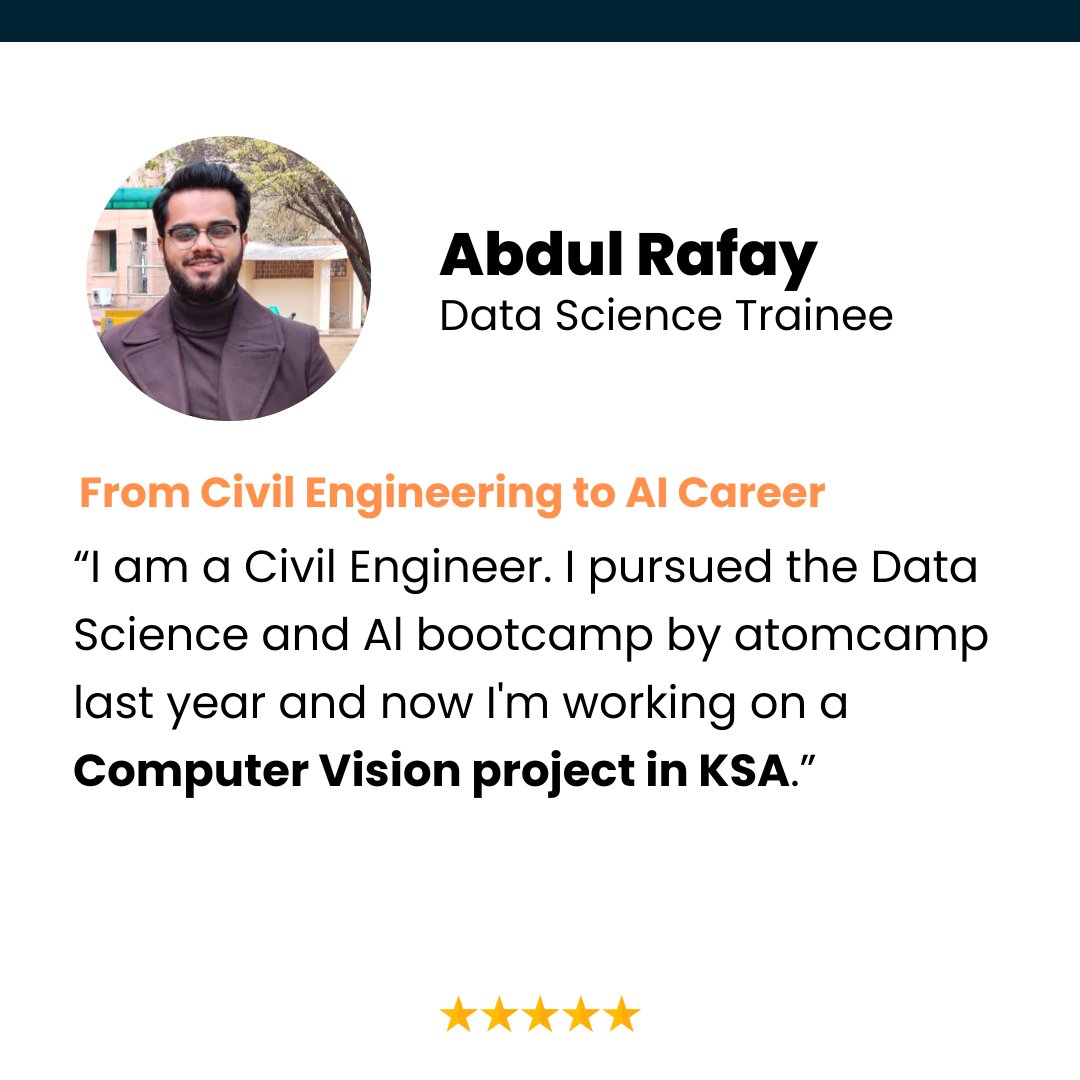
Earn a Verified Certificate of Completion
Earn a data science certificate, verifying your skills. Step into the market with a proven and trusted skillset.
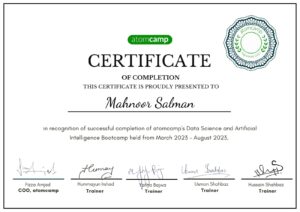
Potential Job Route
Machine Learning Engineer
The average salary of a machine learning engineer in the US is $170,000 to $200,000.
Artificial Intelligence Engineer
The average salary of a machine learning engineer in the US is $1,20,000.
Data Scientist
The average salary of a machine learning engineer in the US is upto $200,000.
Trusted By Leading Companies









Hear from our Students
Frequently Asked Questions
Classes run five days a week, ensuring an immersive and engaging learning experience.
Our bootcamp explores cutting-edge data science technologies, covering machine learning, data analysis, and essential programming languages.
Absolutely! Active participation is crucial, with 80% attendance required for certification.
Yes, participants dive into hands-on assignments, reinforcing learning and practical application.
Definitely! We actively support participants in securing internships or jobs, rewarding those who show exceptional commitment and engagement.
A Bachelor’s Degree in various fields is accepted, including Computer Science, Engineering, Maths, Stats, Economics, and Business
We recommend investing 2 extra hours daily to dive into materials, ace assignments, and truly embrace the learning journey.
Our bootcamp features live training sessions, providing real-time interaction with instructors and peers.
Fulfill attendance, engage actively, complete assignments, and demonstrate proficiency in the taught skills.
Regular attendance is encouraged, but we understand life happens. Communicate any issues, and we'll support your journey.
Yes, we host Teaching Assistant (TA) sessions for reviewing material, clarifying concepts, and addressing queries.
Fill out the application form below, and our admissions team will guide you through the next steps.
It covers essential math concepts, laying the groundwork for understanding and applying advanced data science and machine learning algorithms.
This series focuses on soft skills, industry awareness, and career readiness, ensuring you're well-equipped for success in data science.


